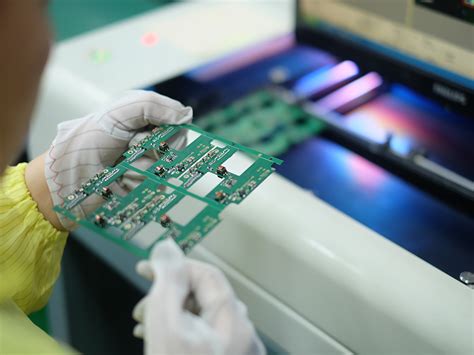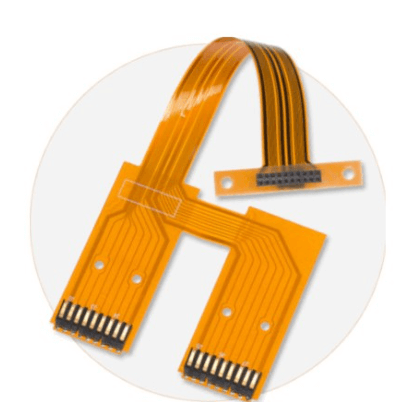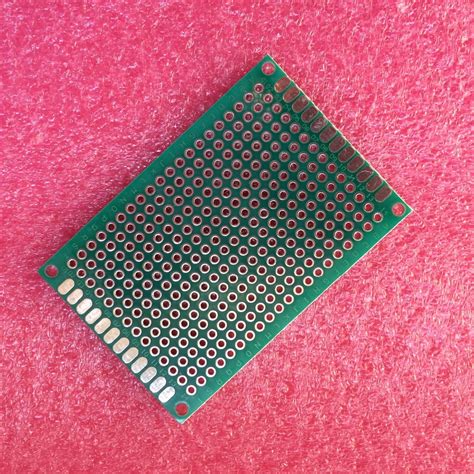Flex pcb capabilities
Design Innovations Enabled by Flex PCB Technology
Flex PCB technology has revolutionized the landscape of electronic design, offering a myriad of innovative possibilities that were previously unattainable with traditional rigid circuit boards. This advancement in technology has not only expanded the horizons of design but also enhanced the functionality and reliability of electronic devices across various industries. As we delve into the capabilities of flex PCBs, it becomes evident that their unique properties are driving significant innovations in design.
One of the most notable advantages of flex PCBs is their ability to conform to complex shapes and fit into tight spaces.
This flexibility allows designers to create more compact and lightweight devices, which is particularly beneficial in industries such as consumer electronics, automotive, and medical devices. For instance, in the realm of wearable technology, flex PCBs enable the development of devices that can comfortably wrap around the human body, providing seamless integration with the user’s lifestyle. This capability not only enhances user comfort but also opens up new avenues for health monitoring and fitness tracking applications.
Moreover, the inherent flexibility of these PCBs contributes to their durability and reliability.
Unlike rigid PCBs, which are prone to damage from vibrations and mechanical stress, flex PCBs can withstand bending and flexing without compromising their structural integrity. This makes them ideal for applications in environments where mechanical stress is a concern, such as in aerospace and automotive industries. The ability to endure harsh conditions without failure ensures that devices remain operational and reliable over extended periods, thereby reducing maintenance costs and downtime.
In addition to their physical flexibility, flex PCBs offer significant electrical performance benefits.
The ability to design circuits with shorter interconnections reduces signal loss and electromagnetic interference, leading to improved performance and efficiency. This is particularly advantageous in high-frequency applications where signal integrity is paramount. Furthermore, the use of advanced materials in flex PCBs can enhance thermal management, allowing for better heat dissipation and improved overall device performance.
The design innovations enabled by flex PCB technology are further amplified by the integration of advanced manufacturing techniques.
The use of additive manufacturing and laser direct structuring allows for greater precision and complexity in circuit design, enabling the creation of intricate patterns and fine pitch components. This level of precision is essential for the miniaturization of electronic devices, a trend that continues to dominate the industry. As devices become smaller and more powerful, the demand for high-density interconnects and multi-layer flex PCBs is on the rise, pushing the boundaries of what is possible in electronic design.
Furthermore, the environmental benefits of flex PCBs cannot be overlooked.
Their lightweight nature contributes to reduced material usage and lower transportation costs, aligning with the growing emphasis on sustainability in manufacturing. Additionally, the potential for recyclability and the use of eco-friendly materials in their production process further enhance their appeal in an environmentally conscious market.
In conclusion, the capabilities of flex PCB technology are driving a wave of design innovations that are transforming the electronic industry. From enabling the creation of compact, reliable, and high-performance devices to supporting sustainable manufacturing practices, flex PCBs are at the forefront of technological advancement. As designers continue to explore the potential of this versatile technology, we can expect to see even more groundbreaking applications that will shape the future of electronics.

Enhancing Device Durability with Flexible PCBs
Flexible printed circuit boards (PCBs) have emerged as a transformative technology in the electronics industry, offering a myriad of advantages that enhance device durability and performance. As electronic devices become increasingly compact and complex, the demand for innovative solutions that can withstand the rigors of everyday use has grown. Flexible PCBs, with their unique properties, are at the forefront of meeting these demands, providing a robust foundation for modern electronic devices.
One of the primary benefits of flexible PCBs is their ability to bend and conform to various shapes without compromising their functionality.
This adaptability is particularly advantageous in applications where space is limited, and traditional rigid PCBs would be impractical. By allowing for more efficient use of available space, flexible PCBs enable the design of smaller, lighter devices without sacrificing performance. This capability is crucial in industries such as consumer electronics, automotive, and medical devices, where compactness and reliability are paramount.
Moreover, the inherent flexibility of these PCBs contributes significantly to device durability.
Unlike rigid PCBs, which can crack or break under stress, flexible PCBs can absorb and distribute mechanical stress more evenly. This characteristic reduces the likelihood of damage from vibrations, impacts, or repeated bending, thereby extending the lifespan of the device. In applications where devices are subject to constant movement or harsh environmental conditions, such as wearable technology or aerospace equipment, the durability provided by flexible PCBs is indispensable.
In addition to their mechanical advantages, flexible PCBs also offer superior thermal management capabilities.
The materials used in their construction, such as polyimide, have excellent heat resistance properties, allowing them to operate effectively in high-temperature environments. This thermal resilience not only enhances the reliability of the device but also enables more efficient heat dissipation, which is critical in preventing overheating and ensuring optimal performance. As electronic devices continue to evolve, the ability to manage heat effectively becomes increasingly important, making flexible PCBs a valuable asset in the design and manufacturing process.
Furthermore, the versatility of flexible PCBs extends to their ability to integrate multiple functions into a single board.
This integration reduces the need for additional components and interconnections, which can be potential points of failure. By minimizing these vulnerabilities, flexible PCBs contribute to a more streamlined and reliable device architecture. This capability is particularly beneficial in applications where weight and space are critical constraints, such as in portable medical devices or advanced communication systems.
As the demand for more durable and efficient electronic devices continues to rise, the role of flexible PCBs in enhancing device durability becomes increasingly significant.
Their unique combination of flexibility, durability, and thermal management capabilities positions them as a key enabler of innovation across various industries. By leveraging these advantages, manufacturers can design and produce devices that not only meet but exceed the expectations of modern consumers.
In conclusion, flexible PCBs represent a pivotal advancement in the field of electronics, offering solutions that address the challenges of durability and performance in contemporary devices. As technology continues to advance, the capabilities of flexible PCBs will undoubtedly play a crucial role in shaping the future of electronic design and manufacturing, ensuring that devices are not only more durable but also more efficient and reliable.

Space-Saving Solutions: The Role of Flex PCBs in Miniaturization
In the ever-evolving landscape of electronics, the demand for smaller, more efficient devices continues to drive innovation. One of the key technologies enabling this miniaturization is the flexible printed circuit board (flex PCB). Flex PCBs have become indispensable in the design and manufacture of compact electronic devices, offering a range of capabilities that make them ideal for space-saving solutions. As the name suggests, flex PCBs are designed to be flexible, allowing them to bend and conform to various shapes and spaces. This flexibility is a significant advantage over traditional rigid PCBs, which are limited by their inability to adapt to non-linear configurations. Consequently, flex PCBs can be integrated into devices with complex geometries, such as wearable technology, medical implants, and compact consumer electronics, where space is at a premium.
Moreover, the inherent flexibility of these PCBs allows for the reduction of connectors and interconnects, which are typically required in rigid PCB assemblies.
By minimizing these components, designers can further reduce the size and weight of electronic devices, contributing to the overall miniaturization effort. Additionally, the reduction of interconnects enhances the reliability of the device by decreasing potential points of failure, which is particularly crucial in applications where durability and longevity are paramount.
Another notable capability of flex PCBs is their ability to support high-density component placement.
The thin and lightweight nature of flex PCBs allows for the integration of more components in a smaller area, without compromising performance. This high-density capability is essential in modern electronics, where the demand for increased functionality within limited space is ever-present. As a result, flex PCBs are often employed in advanced applications such as smartphones, tablets, and other portable devices that require a multitude of features in a compact form factor.
Furthermore, flex PCBs offer excellent thermal management properties, which are vital in maintaining the performance and reliability of miniaturized electronic devices.
The materials used in flex PCBs, such as polyimide, have superior heat resistance compared to those used in traditional rigid PCBs. This characteristic allows for better dissipation of heat generated by densely packed components, thereby preventing overheating and ensuring optimal device performance. In addition to their thermal advantages, flex PCBs also provide enhanced signal integrity. The ability to design circuits with fewer interconnections and shorter signal paths reduces the risk of signal loss and electromagnetic interference, which are common challenges in high-frequency applications. This capability is particularly beneficial in telecommunications and data transmission devices, where maintaining signal quality is critical.
As the trend towards miniaturization continues, the role of flex PCBs in enabling space-saving solutions becomes increasingly significant.
Their unique combination of flexibility, high-density component support, thermal management, and signal integrity makes them an ideal choice for a wide range of applications. As technology advances, it is likely that the capabilities of flex PCBs will continue to expand, further solidifying their position as a cornerstone of modern electronic design. In conclusion, the adoption of flex PCBs is a testament to the ongoing pursuit of innovation in the electronics industry, as manufacturers strive to meet the growing demand for smaller, more efficient devices. By leveraging the capabilities of flex PCBs, designers can overcome the challenges of miniaturization, paving the way for the next generation of electronic devices that are not only compact but also highly functional and reliable.

Flex PCBs in Wearable Technology: Expanding Possibilities
Flex PCBs, or flexible printed circuit boards, have emerged as a pivotal component in the advancement of wearable technology, offering a myriad of possibilities that were previously unattainable with traditional rigid PCBs. As the demand for more compact, lightweight, and versatile electronic devices continues to grow, the unique capabilities of flex PCBs are being increasingly recognized and utilized in the design and development of wearable technology. This evolution is driven by the inherent properties of flex PCBs, which provide significant advantages in terms of flexibility, durability, and space efficiency.
One of the most notable capabilities of flex PCBs is their ability to conform to various shapes and contours, which is particularly beneficial in the realm of wearable technology.
Unlike rigid PCBs, which are limited by their inflexible nature, flex PCBs can be bent, twisted, and folded without compromising their functionality. This adaptability allows for the seamless integration of electronic components into wearable devices, such as smartwatches, fitness trackers, and medical monitoring devices, which often require a snug fit against the human body. Consequently, designers and engineers are afforded greater creative freedom to develop innovative products that are both functional and comfortable for the user.
In addition to their flexibility, flex PCBs are also known for their durability.
The materials used in the construction of flex PCBs, such as polyimide and polyester films, are resistant to environmental stressors, including heat, moisture, and mechanical wear. This resilience is crucial for wearable technology, which is frequently exposed to harsh conditions and continuous movement. By utilizing flex PCBs, manufacturers can ensure that their devices maintain optimal performance and longevity, even under strenuous conditions. This durability not only enhances the reliability of wearable devices but also reduces the need for frequent repairs and replacements, thereby offering a cost-effective solution for both producers and consumers.
Moreover, the space-saving nature of flex PCBs is another significant advantage that cannot be overlooked.
As wearable technology becomes increasingly sophisticated, the demand for more complex circuitry within a limited space has intensified. Flex PCBs address this challenge by allowing for the integration of multiple electronic components within a compact footprint. Their thin and lightweight design enables the stacking and layering of circuits, which maximizes the use of available space without adding bulk. This capability is particularly advantageous in the development of miniaturized devices, where every millimeter counts.
Furthermore, the versatility of flex PCBs extends beyond their physical attributes.
They can be customized to meet specific design requirements, including varying thicknesses, shapes, and sizes, as well as the incorporation of additional features such as shielding and surface mounting. This level of customization is essential in the rapidly evolving field of wearable technology, where consumer preferences and technological advancements are constantly shifting. By leveraging the customizable nature of flex PCBs, manufacturers can quickly adapt to market trends and deliver cutting-edge products that meet the diverse needs of users.
In conclusion, the capabilities of flex PCBs are instrumental in expanding the possibilities of wearable technology. Their flexibility, durability, space efficiency, and versatility make them an ideal choice for the development of innovative and reliable wearable devices. As the industry continues to evolve, the role of flex PCBs in shaping the future of wearable technology is poised to become even more significant, driving further advancements and opening new avenues for exploration.






